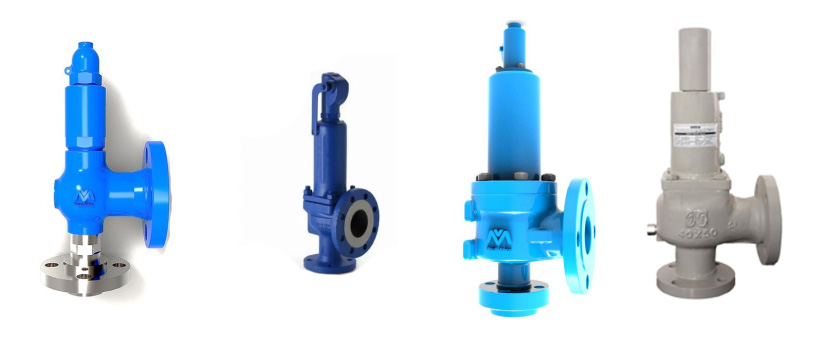
Description
Safety Relief Valve :
Full lift, Full Nozzle type SRV suitable for Steam, Gases and Liquids.
Sizes : 1"to 10" Flanged ANSI 150 TO 2500 Class.
Orifice and Face to face dimension according to API 526 .Adjusting ring .Screwed Full Nozzle Flanges according to ANSI B 16.5 ISO PN Flanges (On Request).
Nozzle & Disc Stellited. Seat - Metal to Metal or Metal to soft
API 520/526/527. CCOE/PESO Approved.
Body Materials : Carbon Steel, Stainless Steel, Cr Mo Steel, Low temperature Steel, Nickel Copper Alloy, Alloy 20.
Accessories : Balanced Bellows, Test Gag, Lifting Lever, Steam Tracing Jacket
Thermal Relief Valve
Full lift full Nozzle type Themal Relief valves suitable for Gas, Liquid or Cryogenic services.
Size 1/2"to 11/2" ANSI Flanged 150 to 2500#. Set Pressure upto 420 bar.
End connection flanged (150# to 2500#) . Adjusting ring . Inlet connection screwed male or female, Full Nozzle design/Screwed or Flanged.
Flanges according to ANSI B 16.5. ISO PN Flanges (On Request)
Suitable for Thermal Relief applications.
Body Materials : Carbon Steel, Stainless Steel, Cr Mo Steel, Low temperature Steel, Nickel Copper Alloy, Alloy 20.
API 520/527.
Safety relief valves, also known as pressure relief valves or safety valves, are crucial safety devices used to protect pressure vessels, pipelines, and other equipment from overpressure conditions. They are designed to automatically relieve excess pressure by opening and allowing the release of fluid or gas from the system, thus preventing catastrophic failures or explosions. Here are the key features and functions of safety relief valves :
1. Overpressure Protection : The primary function of a safety relief valve is to protect equipment and systems from overpressure. When the pressure inside a vessel or system exceeds a predetermined set pressure, the safety relief valve opens to relieve the excess pressure and prevent damage or failure.
2. Pressure Set Point : Safety relief valves are set to open at a specific pressure, known as the set pressure or relief pressure. This set pressure is determined based on the maximum allowable working pressure (MAWP) of the protected equipment or system. It is crucial to set the relief pressure accurately to ensure effective protection while avoiding premature or unnecessary valve activation.
3. Pressure Relief Mechanism : Safety relief valves typically use a spring-loaded mechanism to maintain the valve in a closed position. When the pressure exceeds the set pressure, the force exerted by the fluid or gas against the valve's disc or seat overcomes the spring tension, causing the valve to lift and allow the excess pressure to be relieved.
4. Flow Capacity : Safety relief valves are designed to handle a specific flow capacity or relieving capacity, which represents the maximum flow rate of fluid or gas that the valve can discharge when fully open. The flow capacity is determined by the valve's size, design, and the requirements of the protected system.
5. Rapid Response : Safety relief valves are required to respond rapidly to overpressure conditions to prevent equipment damage. They are designed to open quickly and fully when the set pressure is exceeded, allowing for immediate pressure relief and minimizing the risk of equipment failure.
6. Re-seating and Tight Shutoff : After relieving excess pressure, safety relief valves should be capable of re-seating and closing tightly to prevent any further discharge of fluid or gas once the pressure has returned to normal operating levels. Proper re-seating and tight shutoff are crucial to maintain system integrity and prevent unwanted leaks.
7. Codes and Standards : Safety relief valves are manufactured and tested in accordance with industry standards and codes, such as the American Society of Mechanical Engineers (ASME) Boiler and Pressure Vessel Code. Compliance with these standards ensures the quality, performance, and reliability of safety relief valves.
8. Regular Inspection and Maintenance : Safety relief valves require periodic inspection, testing, and maintenance to ensure their proper functioning and reliability. These activities involve checking the set pressure, inspecting for signs of wear or damage, testing the valve's opening and closing characteristics, and verifying the proper sealing of the valve.
